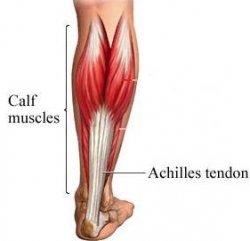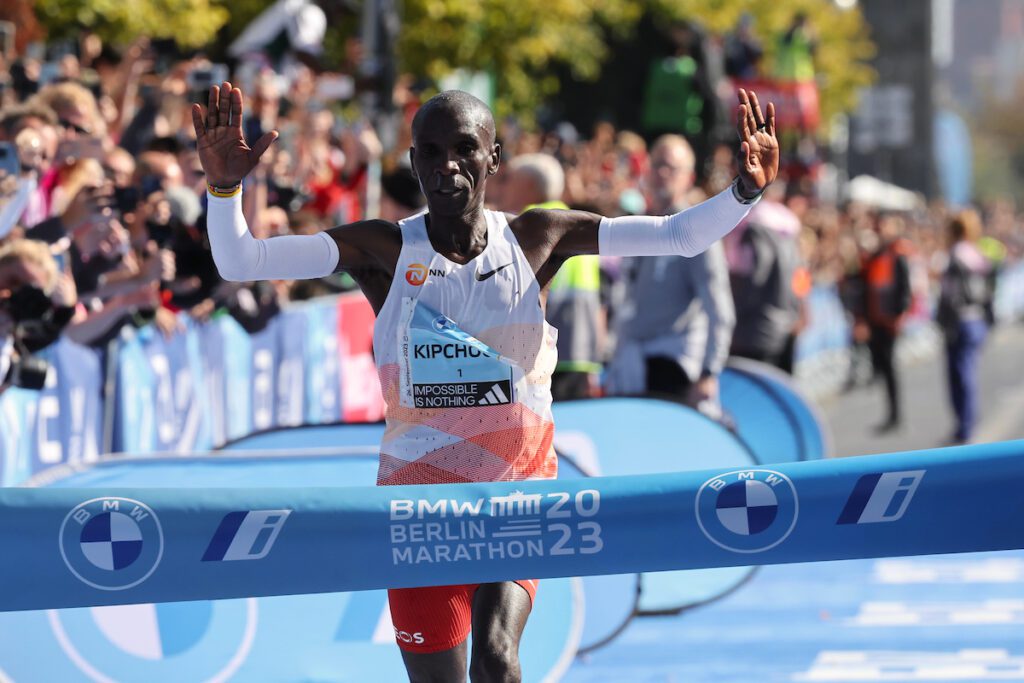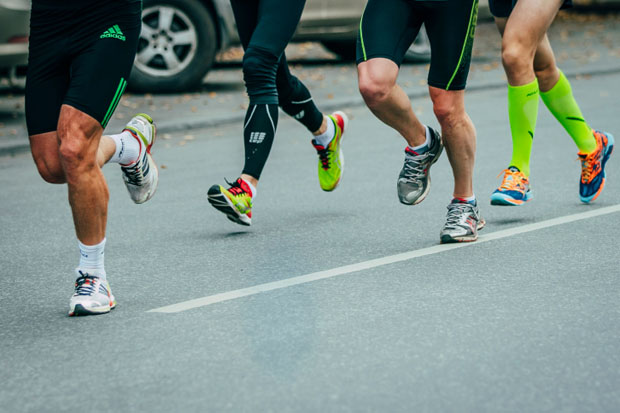Deconstructing heel-to-toe offset (aka “drop”) in running shoes
Dr. Kris Sheppard explains how your shoe may be helping–or hindering–your stride

Shoe offset, also known as heel drop, refers to the difference in height between the heel and forefoot of a running shoe. This feature influences a runner’s stride and can have implications for injury susceptibility. We spoke to Dr. Kris Sheppard, a chiropractor at the Runner’s Academy in Toronto, to understand how the heel drop in your shoe may be impacting your running.
How does shoe offset affect running stride?
Low-drop shoes may have a drop of between 0 mm and 6 mm, whereas a higher-drop shoe will generally be between 8 mm and 12 mm. Sheppard explains that a lower heel-toe drop in running shoes can decrease inward knee motion (knee adduction), which has been associated with knee and hip issues in running. A lower drop can also reduce load at the patellar femoral joint (knee joint) by approximately 30 per cent. “Some studies have shown that zero-drop shoes can encourage a midfoot strike, which was once considered to be protective overall,” says Sheppard. “And a midfoot strike can also help reduce forces on the patellar femoral joint.”

During the minimalist shoe trend, it was believed that lower-drop shoes were superior, however recent research suggests otherwise.
Is heel-striking bad?
Some experts suggest that higher-drop shoes encourage heel striking, which is thought to be “bad.” But Sheppard points out that heel striking is not actually the problem; the problem is that it usually leads to overstriding. More on that in a minute.
“Lower [drop] shoes have been shown to encourage a midfoot strike rather than a heel strike,” says Sheppard. “It is important to note that heel striking does not necessarily equate to overstriding. Interestingly, research has shown that the majority of runners, including elite runners like [former marathon world record holder Eliud] Kipchoge, actually land with their rear foot.”

Overstriding occurs when the foot and ankle land in front of the knee, rather than directly under the knee with the shin in a vertical position. “Imagine landing on a trampoline with your foot and ankle in front of your knee; this would result in a rebound backwards, regardless of the foot strike pattern,” he says. Over-striding increases horizontal braking forces in the body, which has been shown to increase the risk of injury–as well as slowing runners down.
It is worth mentioning that the new “super shoes” with carbon and spring-type components work with the heel-toe offset to drive runners faster and more efficiently toward the big toe, but this is only effective if landing on the rear foot.

Is a higher or lower offset better for your Achilles tendons?
“Contrary to common belief, a higher drop does not increase the risk of Achilles tendon injury,” says Sheppard. “In fact, a higher drop has been shown to help with Achilles tendon pain.”
However, the body’s tissues adapt to the way they have been loaded. If a runner has always been using a higher drop shoe and suddenly switches to a lower offset, the tissues are at greater risk of injury. To mitigate this risk, a gradual transition is recommended. For example, a small change of 2 mm can be made over a period of six months by incorporating low-offset shoes into training cycles once or twice a week. This strategy can help adapt the tendons to a lower drop and reduce the risk of injury.
Runners: alleviate your knee pain with these strength exercises
Should runners buy high or low-offset shoes? Are some runners better suited to one or the other?
“In general, it is not recommended to make drastic changes in the drop of the shoe you have been consistently using if it has been working well for you,” says Sheppard. “However, if a runner is prone to knee pain, a shoe with a lower shoe may be beneficial.” This means that if you buy a new shoe you haven’t worn before, make sure the new shoe’s drop isn’t significantly lower than what you’re used to–or if it is, incorporate it into your routine gradually to avoid injury.
On the other hand, Sheppard notes that if someone is susceptible to Achilles tendon issues, a higher drop may be more suitable. He adds again that making significant changes in shoe offset can increase the risk of injury, so it is important to proceed with caution and consider personal factors and injury history when selecting running shoes.


